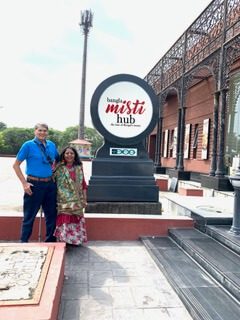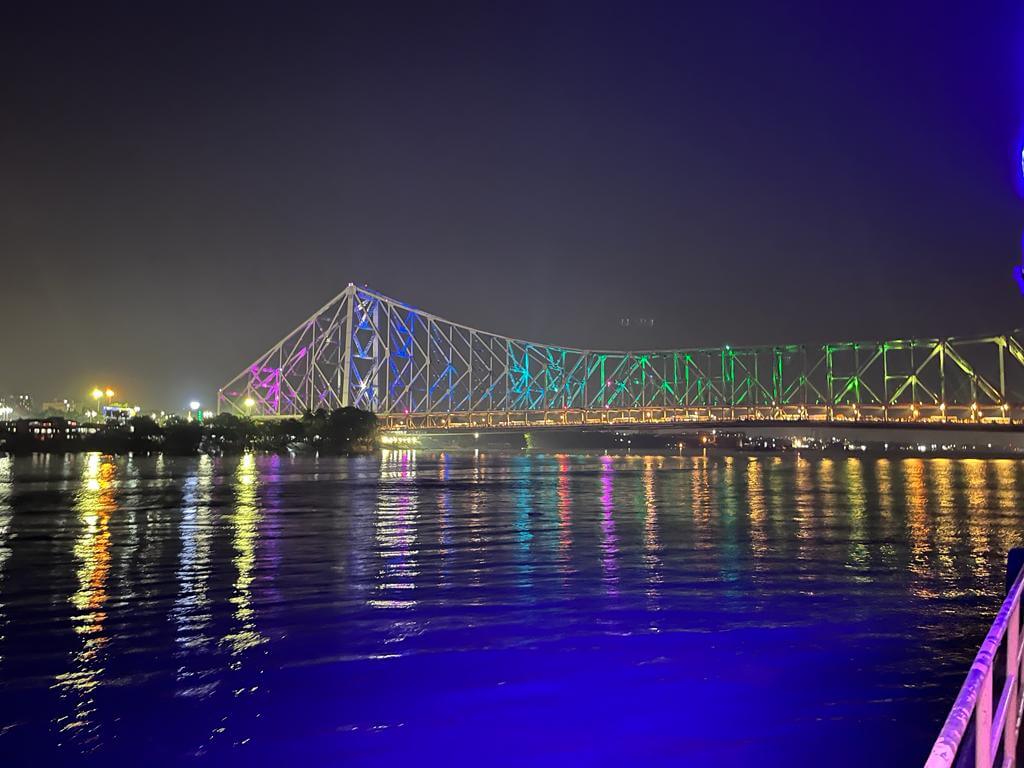Dr Roopali recounts Kolkata’s colour, mood, food and flavour — an old-world charm in this write-up – exclusively for Different Truths.
Kolkata seemed a glistening city. Not so long ago, it was controversially likened to a dying town. Kolkattans don’t think it is glistening or glittering. I guess those who reside there are aware of its many issues. But that is true of all city dwellers. They invariably harken back to a glorious past and complain of overcrowding and traffic jams.

Early residents resent new ones. And now that cars are affordable, they miss the exclusivity of being the only ones riding in a vehicle to the Calcutta Club or any of the grand five-star hotels.
Colonial Bengal was once upon a time the hub of the East India Company and the capital of British India. The city of Kolkata is dotted with its past. The Victoria Memorial, the Racecourse, the Hooghly Bridge, the Writers Building, Park Street, the Ordnance Club, the Calcutta Club, and many, many more.
Fort William, in its magnificence, continues as a military garrison. Today, the Indian Army lodged inside belongs in the fort’s vast open environs. The Army is no longer there to protect its interests. They are there to protect our interests. That is the difference.
Fort William’s history has been kept alive through repair and renovation.
Fort William’s history has been kept alive through repair and renovation. The Officers’ Mess sports pictures of past and present military officers. It is truly magnificent and commanding. Time stands still here. A church bears witness to the British occupation of India.
Our recent visit for a special military occasion allowed us access to its grandeur. Its preserved architectural heritage and precious photographs of a time gone by come alive. The red carpeted steep stairs take you into another time and place. Witnessing the military memorial service for our martyred soldiers also brought back memories and stories from a long time ago.
The Alipore jail is not too far away in the heart of Kolkata. Commonly referred to as ‘Old Alipore Jail’, the Presidency Correctional Home was given the status of the first Central Prison in Bengal in the year 1864.
A few old structures inside this prison have been reduced to ruins.
A few old structures inside this prison have been reduced to ruins. History books tell us they witnessed India’s history written by the freedom fighter luminaries incarcerated there. Recently renovated and recreated, the jail houses a museum celebrating India’s freedom fighters.



Sri Aurobindo Ghosh, Barindra Kumar Ghosh, Netaji Subhash Chandra Bose, Kazi Nazrul Islam, Sarat Chandra Bose, Bina Das, Suhasini Ganguly, Kamala Dasgupta, Lila Roy, Ujjala Majumdar, and others were imprisoned there. In contrast, many others were mercilessly put to death.
The resistance movement continued undeterred in prison. Sri Aurobindo wrote in his book Karakahini of his solitary confinement in the Alipore jail. “….. stretched before me was a year’s imprisonment, during which all bonds of normal human life would be rent asunder and that for a whole year I would have to live, not as part of the civilised human society but like a caged animal. And that my return to the field of action would not be as the familiar Aurobindo Ghose of old but as a transformed being with a transformed character, a transformed intellect, a transformed life, and a transformed mind.”
In this solitary hole, he was given inedible food and the indignity of defecating in a bucket. That was cleared only several days at a time. All night the jail police would wake him up and ask, “how are you?” The idea was not to allow comfortable sleep and escape from reality. These natives were getting restless! They had to be put away.
Whenever you visit Kolkata, do try to visit the Alipore Jail Museum.
Whenever you visit Kolkata, do try to visit the Alipore Jail Museum. It is an exciting place. And it’s essential to see how people gave their todays for our tomorrows.
Today, we die for foods like Kosha Mangsho (slow-cooked lamb curry), Chingri Macher Malai Curry (Prawns cooked in coconut milk), Bhaapa Ileesh (Steamed Hilsa fish), Mishti doi (Sweetened yoghurt), Payesh (Spiced rice pudding) and luchi (Deep fried flatbreads).
You don’t have to be a Bengali to look for Bengali food. Anyone who has once inhaled the fragrance and aroma of this cuisine cannot be the same again. So off went the spouse from the mountains of Uttarakhand in search of these delectable dishes!
A restaurant called Koshe Kosha sounded genuine. Locals dissuaded us. But we went. Finally, at three in the afternoon, we found the place behind posh Park Street. It turned out to be a dhaba sort of place with tin chairs and tables.
The much-used menu had delectable pictures.
The much-used menu had delectable pictures. The place was offering all this and more. Hungry and greedy, we ordered almost everything on the menu, to the waiter’s shock and the owner’s delight.
We were seated right next to the kitchen. The aromas coming our way made our hunger-greedy stomachs moan and groan and yell. It took a long time to wrap the Ileesh Hilsa fish in banana leaf and stir the lamb in its juices until it was almost fried brown. The luchi had to be fried in real-time, and the prawns in their coconut gravy had to be lightly tempered with red chillies and mustard seeds. The puffy gleaming white rice took its time.




When the food finally arrived, everyone grinned in delight as the spouse fell on the fare! He frantically used his fingers to unwrap the steamed Ileesh fish. I ate gingerly, embarrassed by the slurping sounds next to me. Sigh! Finally, we were done.
The manager suddenly came over and saluted the satiated soldier. He had seen the car with “On Army Duty” parked outside. A soldier marches on his stomach.
We were thoroughly satisfied with our Bengali lunch.
We were thoroughly satisfied with our Bengali lunch. But now came the hunt for Mishti – the famous sweets and confections of Bengal. We managed to find the famous KC Das sweets.
However, whatever we wanted to carry would spoil by tomorrow. As fresh as it was! We managed some just for dessert.
The same night, with our full bellies, we attended a military Bara Khaana. This is a ritual held on special occasions. All ranks – officers, enlisted soldiers, and their families- dine, wine, and make merry together.
We watched an exquisite dance performance but couldn’t see the great food. The Kosha lunch was still wiggling inside our bloated bellies. We merrily lied our way through all hospitality inquiries. We were fasting. Of course, we could try veggies and perhaps just half a gulab jamun sweet treat!
But we were still grieving. We needed to pick up a stash of mishti (sweets) to bring home. We had come to Kolkata and were not getting Mishti. Wail! Wail! The next day on our way to the airport, our car driver declared that all “branded” mishti was available on the way to the airport. He was a native of nearby Bihar state but spoke the local language and knew Kolkata like the back of his hand.
We couldn’t believe our eyes when we stopped at this fantastic place called Mishti Hub.
We couldn’t believe our eyes when we stopped at this fantastic place called Mishti Hub. Just 15 minutes away from the airport. How convenient! A beautifully done aesthetic place. We walked around shopping for our favourites.
All kinds of sweet treats made from condensed milk, hung milk, cooked milk, date palm sugar – Chumchum, Kheer Kodom, Rosh Kodom, Sandesh, Khejurer Gur, more and more and more and much more!
I quietly slipped off and ate some Kochori (stuffed with green peas) with alur dum (potato curry). I spied some textiles, too. The famed Kantha – hand-embroidered sarees of Bengal. I was sorely tempted. By now, I knew the wallet was empty.
Saree-shopping would have to wait.
I was sure the airline wouldn’t let us aboard loaded with all that Bengali Mishti. But they did. We looked so happy and contented that they welcomed us on board — the Maharajah effect. Air India, after all!
Photos by the author






 By
By

 By
By